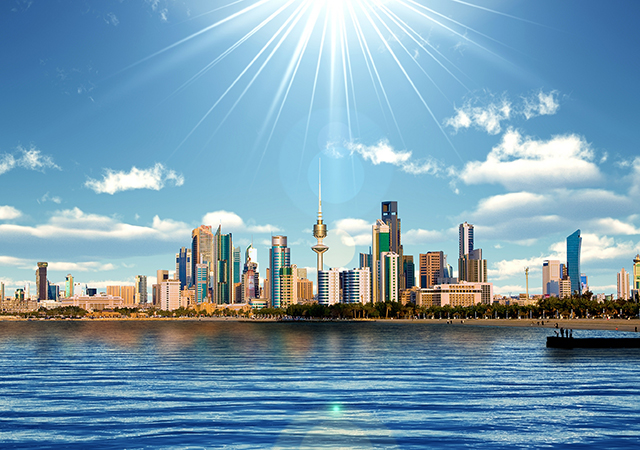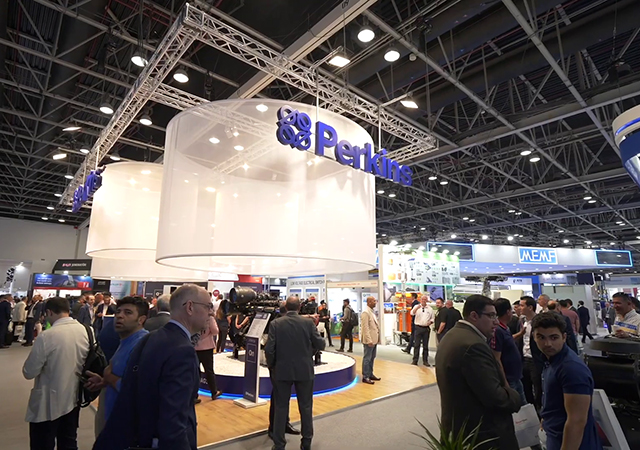
 Oman International Container Terminal at Sohar Port
Oman International Container Terminal at Sohar Port
Sohar Port and Freezone, a joint venture between the Port of Rotterdam and the Sultanate of Oman, is projecting continued double-digit growth in coming years underpinned by investments in new terminal capacity and a raft of new projects, its chief executive officer Andre Toet has said.
“Going forward, we will continue to grow at substantial levels; ongoing improvement and development, investment, personalised service and modern infrastructure will all significantly contribute to our expected growth over the next decade,” Toet asserted.
The official referred to relocation and expansion at Oman International Container Terminal (OICT) which, when fully completed, will more than double its current capacity and target 1.5 million teu of containers annually.
Other investment Toet touched on was the Expanded Petrochemicals Cluster where Oman Oil Refineries and Petroleum Industries (Orpic), the nation’s oil refining and petrochemicals flagship, and parent company Oman Oil Company SAOC, are investing in major upsizing. Three major refinery and petrochemicals-based schemes with a combined capital investment of $6.5 billion over the next five years are envisaged.
Toet commented on high-priority work ongoing for connecting the port and freezone with the GCC and national rail networks.
 |
|
Toet: Sohar geared for growth |
“Without doubt rail connectivity will change the logistics landscape due to Sohar’s advantageous geopolitical location,” he observed.
“A rail line that starts from Sohar and goes all the way into the Gulf will give Oman the opportunity to become the main logistics player in the region, much like how Jebel Ali in Dubai positioned itself for growth at the outset of its development.
“We have created a dedicated team in our Technical Department to chart an effective and optimum plan for rail linkages that will help cargo flows in and out of the port and free zone primarily from the standpoint of Sohar’s gateway concept.
“In addition, Sohar Airport is set to be fully operational in the near future, enabling not only speedy air transportation links between this important port city, but also opening the way for the growth of a promising airfreight industry. This industry is likely to capitalise on Sohar’s’ emergence as a well-diversified manufacturing hub as well as its world-class infrastructure to focus on time-sensitive exports such as fabrics that need to be airfreighted to international markets.”
Toet highlighted the importance of Sohar Port and Freezone saying it had undoubtedly a pivotal role as an engine for economic growth in Oman.
“The past year has been an extremely successful one. While growth in 2012 was a robust 52 per cent, we are able to say that in 2013 we continued the trend for growth and investment. The highpoint of the year was achieving an aggregate cargo throughput of about 50-million tonnes, a milestone that was accomplished within a mere 11 years from start-up.”
ADVANTAGES AND INVESTMENTS
Sohar Port and Freezone seeks to leverage Sohar’s geographical location at the centre of global trade routes between Europe and Asia as well as its world-class deepwater harbour facilities and excellent infrastructure to provide investors with a robust manufacturing and export platform for achieving global competitive advantages, cost efficiencies and access to new markets.
“This approach is imperative to the government’s goal of stimulating investment opportunities for local Omani businesses, creating employment of nationals, supporting the growth of small and medium enterprises and contributing to economic diversification in general,” says Toet.
“Our vision and ambition is to see Sohar become a byword for sustainability and a catalyst for economic diversification. We are committed to working with the various port stakeholders to build a sustainable future for the Omani people. The goal is to continue working with the local community to enhance socio-economic conditions in our neighbourhood, as well as leverage Sohar’s economic strength to fuel national growth and prosperity.”
OICT signed an expansion agreement early last year for creating a 70-hectare container terminal. The development will increase capacity from 800,000 teu to 1.5 million teu and see yard space more than double from 28 hectares along with the installation of seven quay cranes.
 |
|
Brazil’s Vale is one of the top exporters at Sohar Port |
Investment in the expansion totals $130 million, and the state-of-the-art facilities, award-winning technology and port depth will mean the current maximum vessel size will increase from 6,500 teu to more than 10,000 teu. This increased capability will further underscore Sohar’s competitive position. Already many of the world’s most renowned shipping companies such as Maersk Line, UASC, CMA and APL operate from the existing container terminal. These recent developments enable shipping lines to bring their mainline vessels directly into Oman. Maersk Line was the first to embrace the move of commercial activity from Muscat and announce their commitment to Sohar.
The move of all commercial activity to Sohar from Muscat in August this year will see 330,000 teu of throughput transferred to Sohar where imports, exports and transshipment are all doing well, says Toet. Dry bulk, which includes Vale, Jindal and Sohar Aluminium’s imports and exports, sees throughput today of 26 million tonnes per year (tpa) (with 45 million tpa capacity), and 330,000 tonnes of break bulk, while liquid bulk is close to 17 million tonnes, mainly through oil-related products. Containers stand at 206,000 teu, with an ultimate Oman International Container Terminal (OICT) capacity of 1.5 million teu.
Adjacent to the port is the Sohar Freezone; this was added only in 2009, seven years after the port was launched. The port and free zone is one of the fastest growing such developments in the world and current investments there exceed $15 billion, said Toet.
HIGH-PROFILE PLAYERS
International players in the port including Hutchison from Hong Kong, Vale from Brazil, Jindal from India, Steinweg from Holland and Oiltanking/Odfjell from Germany/Norway are already doing brisk business.
Sohar has marketing offices in the UAE and will very soon open an office in India. In collaboration with its partner Port of Rotterdam, Sohar Port and Freezone has representation in Europe, Brazil and China, strengthening global reach further.
“Our partnership and work with Rotterdam port provides us with a great opportunity to be recognised on a global scale and attract companies from around the world,” commented Toet.
“Sohar has been attracting FDI since 2002 when we started developing the port. The superb location, the connectivity between Sohar and the rest of the GCC region, the future rail and expressway infrastructure, and of course the feeder network by sea that exists in this region have all been instrumental in attracting global players to Sohar Port and Freezone.
 |
|
A storage facility of Oiltanking Odfjell Terminals & Co at the port |
“In addition to these win-win factors, investors are also looking at the available energy resources to set up manufacturing or processing units, of which there are plenty.
“Feedstock is also crucial; there are now many industries in Sohar that manufacture, which in turn has knock-on effects for further manufacturing activity and is beneficial for downstream activity in the free zone. There is huge potential for investment in steel and already we have a strong base upstream for the iron industries.
“Through the aromatic plant we have a similar situation for plastics; we’re continually attracting more and more operators which will lead to investments in downstream plastic-related activities in the free zone.”
Sohar Port and Freezone encourages investors to start their own warehouse facilities to accommodate their own requirements and those of their clients. Land can be taken up from 5,000 sq m without a maximum. A total area of at least 2,000,000 sq m is available for general warehousing, cold storage and light industrial units. The uptake of the initial phase would suggest sell out within the coming year and therefore the necessary planning for phase two.
The creation of additional downstream opportunities from existing and prospective clients will have a massively positive impact on the local workforce through job generation, Toet points out, adding that for every job created within Sohar Port and Freezone, three or four jobs are created locally with the need for additional services, more accommodation and more shops. “This means everyone from builders, to designers, to restaurant owners will benefit – thus it really does cover a wide range of benefactors.”
More downstream businesses will also trigger vocational training and skills development, inward investment and entrepreneurship and competitiveness, he adds.









